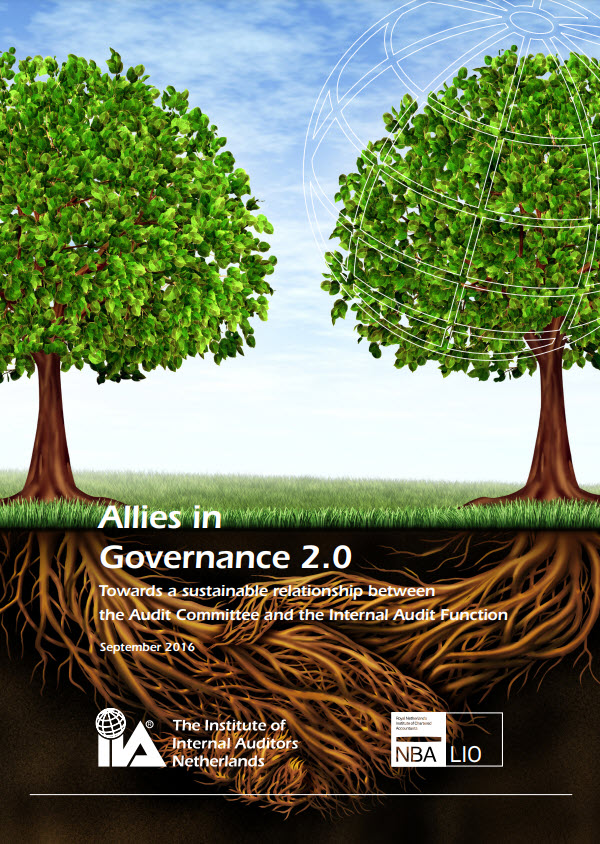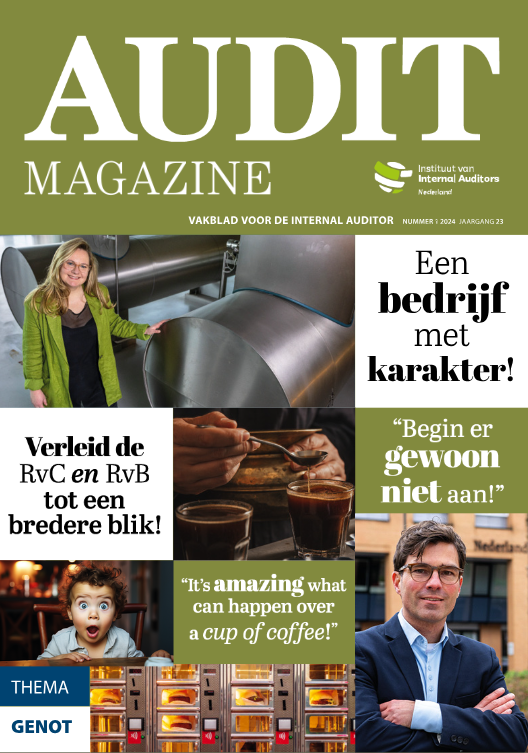
Allies in Governance 2.0
In a properly balanced and structured corporate governance framework, the Audit Committee (AC), the Interne Audit Function (IAF) and the external accountant (EA) rely on each other. The IAF is increasingly seen as an essential element of the organisation’s governance. The IAF supports the AC by providing insight into and assurance about the design and effectiveness of the governance, the risk management and the internal control measures. The AC is in a position to create the correct prerequisites and conditions for the IAF that optimise the IAF’s independence and objective functioning and promote the complementary functioning of the IAF and the EA.
The relationship between the AC and the IAF was first formalised in the original Dutch Corporate Governance Code (the Code) in 2003. Five years later, the Royal Netherlands Organisation of Chartered Accountants (NBA) (then NIVRA) and the Institute of Internal Auditors Netherlands (IIA) surveyed the practice at the time and published the findings and best practices in ‘Allies in Governance’ (2008). In the spring of 2016, the IIA and the NBA jointly set up a working group to look anew at the relationship between the AC and the IAF. In connection with the proposal to revise the Code, in which the AC, IAF and EA triangle features prominently, the working group also focused on the relationship between the IAF and the EA.
The main conclusions from the survey are:
- The formal relationship between the AC and the Chief Audit Executive (CAE) is generally well structured. This relationship is defined in the IAF charter.
- Most ACs are aware of the importance of appointing a qualified CAE. They are therefore also involved in their appointment or dismissal. This involvement can be further improved if every chair of an AC has an interview with the prospective CAE prior to the latter’s appointment.
- Almost all the ACs (80%) are involved in assessing the CAE. This improves his functioning because his objectivity is better guaranteed if his performance appraisal is not only prepared by people directly involved.
- The CAE is seen as a valuable discussion partner and, in most organisations, is present at the entire AC meeting. This enables the CAE to share insights with the AC, also in areas that he has not (yet) studied. It also gives the CAE important information that he requires in fulfilling his job.
- In most organisations, the chairs of the AC and CAE have bilateral discussions several times a year, which strengthens the independence and the bond of trust. To function optimally as ‘trusted advisor’ to both the chair of the board and that of the AC, transparency about the content of these discussions is essential.
- The AC discusses the audit plan and the available resources. Changes in the audit planning are discussed annually (at least) with the CAE. Restricting the available resources has an impact on the choices that have to be made when preparing the audit plan. It is important that the AC understands which risks cannot be covered with the available resources. Better insight by the AC can result in adaptation of the available resources in order to achieve the desired audit coverage.
- The AC can strengthen the assessment of the effectiveness of the IAF by agreeing a wide range of KPIs in consultation with the CAE. The IAF’s quality control and improvement programme has to be part of it.
- Given the increasing relevance of culture and conduct as part of the organisations’ governance, ACs should discuss the audit approach in this field with the CAE. Not all CAEs currently feel themselves up to the task of picking up this gauntlet. The IIA and the NBA should offer the members support in this area by assisting them in developing an approach through training and publications.
- In view of the proposal to revise the Code, there should be a new approach to the collaboration between the IAF and EA, centred on the question of where they encounter and complement one another in the overall field of financial and non-financial information. Optimisation of the relationship between the IAF and the EA and opportunities to improve the organisation’s governance in partnership should be put on the AC’s agenda. An option is to report jointly each year to the board and the AC on the design, existence and operation of the governance and the risk management and internal control systems.







